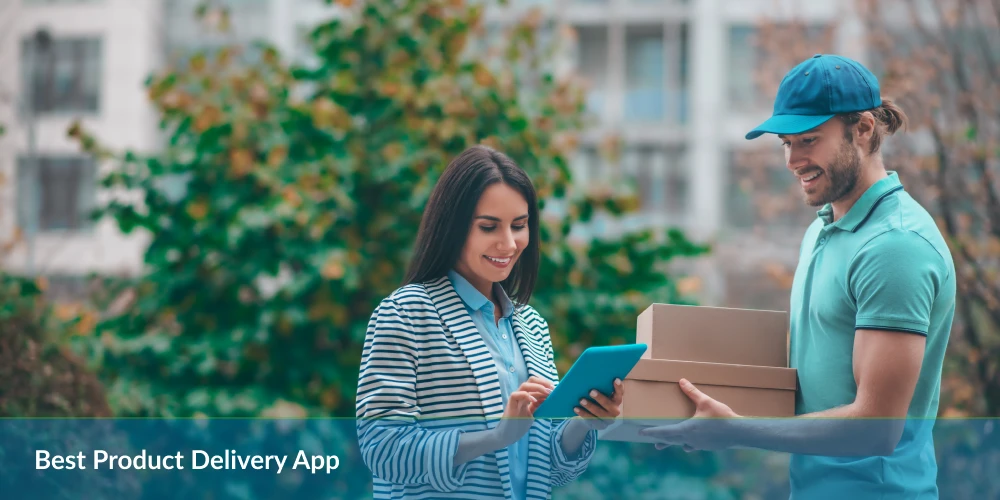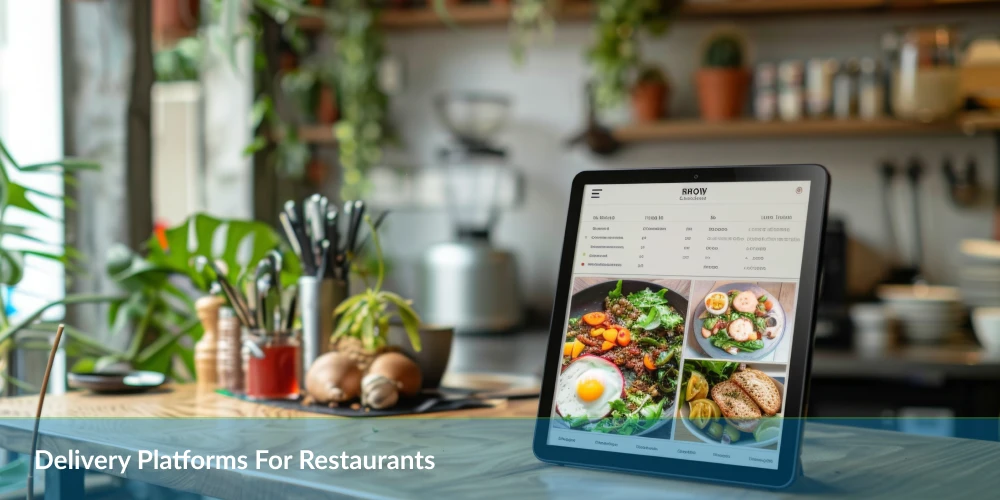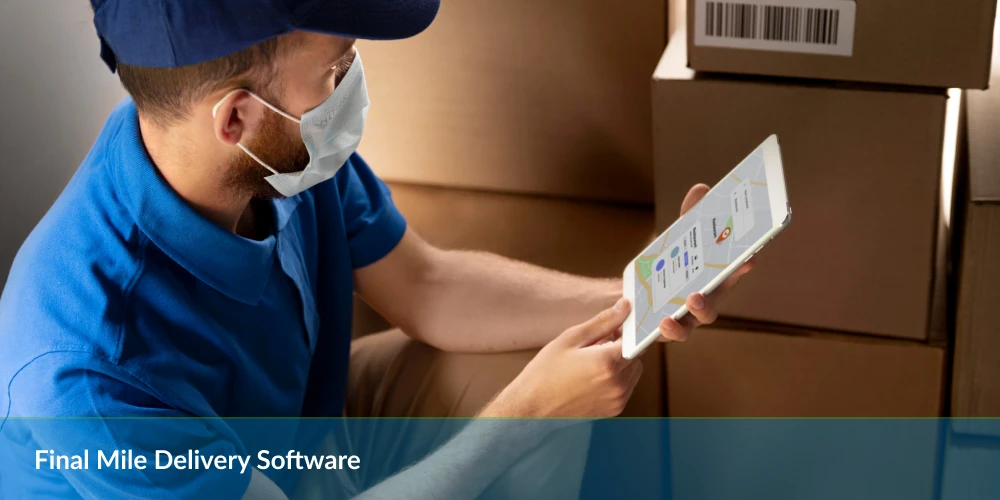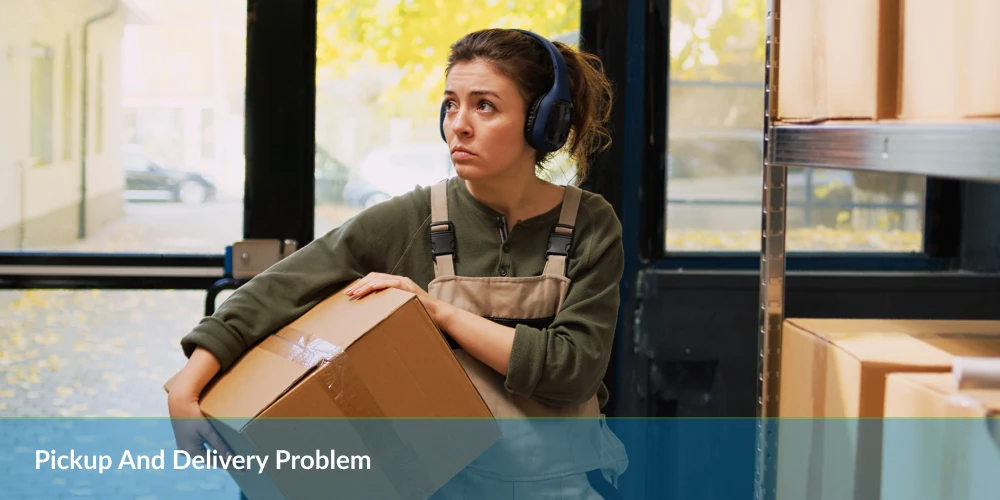Table of Contents
Over the past decade, businesses that once relied on physical storefronts have increasingly migrated online, driving significant growth in the e-commerce sector. According to Statista, revenue is expected to grow at a compound annual growth rate (CAGR) of 8.02% from 2025 to 2029, reaching a projected market volume of US$5.89 trillion by 2029.
A few years ago, if you told a small business owner that the delivery experience would soon become a make-or-break moment for customer loyalty, they might have shrugged it off. Today, it’s the battleground where brands either win hearts or lose customers. When someone places an order, they’re not just buying a product—they’re entering into a contract of expectations: timeliness, transparency, professionalism, and reliability.
In this new landscape, product delivery is no longer a supporting act. It’s center stage.
For modern businesses, especially those operating in e-commerce, retail, subscription models, or local delivery ecosystems, the difference between mediocre growth and consistent revenue often boils down to one thing: the delivery experience.
Today, delivery is no longer just a logistics function. It’s a direct extension of your brand, and customers judge businesses by the speed, reliability, and personalization of their fulfillment experience. A missed window or poor tracking system can damage reviews and erode trust. Conversely, accurate, fast, and flexible delivery options drive higher conversion rates, increase repeat purchases, and strengthen brand affinity.
So what makes a delivery app the best choice for your business? It goes beyond route optimization and courier management. Businesses need a platform that integrates with sales channels, adapts to scale, and delivers real-time visibility to both the company and the customer. In this article, we identify key features, performance benchmarks, and use cases to help you choose the product delivery app that matches your operational size and customer expectations.
What E-commerce Retailers Need from a Delivery Solution
Retailers using platforms like Shopify, WooCommerce, Magento, or BigCommerce demand delivery apps that connect without friction. Integration should happen through APIs or built-in plugins that support order syncing, inventory updates, and status tracking across all sales channels. The ideal delivery solution integrates directly into the workflow, reducing the need for manual updates and minimizing errors during fulfillment.
Fast, Reliable, and Customizable Delivery Services
Speed and dependability are non-negotiable. Amazon Prime has set industry standards with same-day and one-day delivery expectations. Any app that claims to serve e-commerce must support a range of delivery speeds, from instant to scheduled. Additionally, businesses need to offer customization, signature requirements, contactless delivery, time-slot selection, or weekend service. These variables must be controlled per customer or per product type.
Transparent Pricing Models Suitable for Growing Businesses
Unpredictable costs wreck margins. E-commerce sellers look for rate structures that provide cost predictability at scale. Flat-fee per delivery, tiered pricing based on volume, and zero-hidden-fees architecture win favor. Startups and scaling businesses need room for flexibility without watching costs balloon with each new order. Some platforms, like Roadie and Shipday, offer dynamic pricing models tied to real-time logistics data and geography, but clarity is what earns trust.
Real-Time Tracking and Easy Communication for Customers and Partners
Buyers expect updates without asking for them. A strong delivery app offers branded tracking pages, SMS/email notifications, in-app delivery status updates, and seamless chat functionality. But it’s not only about the end customer. Warehouse, support, and delivery associates need a unified dashboard to manage delivery exceptions, reroute problems in real time, and avoid follow-up bottlenecks. Apps like Onfleet and Shippo have raised the bar here through robust driver tracking and geofenced updates.
Data-Backed Insights to Drive Operational Decisions
Every package delivered carries a data point. Best-in-class apps transform delivery data into actionable insights, average delivery time, driver performance, delivery failure rates, and delivery cost per region. These metrics inform when to expand routes, hire couriers, or renegotiate delivery zones. Access to dashboards that generate custom reports or integrate into existing BI tools like Tableau or Google Data Studio can give retailers a measurable edge in margin management and process efficiency.
Pro Tip: Choose a delivery solution that not only scales with your growth but also turns every delivery into a data-driven advantage.
Fast and Reliable Delivery Services: The Heart of Fulfillment
Same-day and next-day delivery aren’t perks, they’re expected standards. According to a 2023 report by Statista, 41% of online shoppers in the U.S. have abandoned a purchase because of unsatisfactory delivery times. The implication is direct: faster delivery converts more carts into completed transactions.
Every minute between checkout and the doorbell becomes part of the customer experience. Retailers using a delivery app that cuts turnaround time by even a few hours significantly raise their perceived value. Fast logistics strengthens brand loyalty and outpaces competitors still clinging to legacy shipping methods.
Diverse Timelines That Match the Customer’s Schedule
One-size-fits-all delivery doesn’t align with the realities of modern consumption. Some buyers want same-day options to meet an urgent need. Others prefer to reserve a slot during specific hours. A delivery app that supports multiple fulfillment modes, express, scheduled, and two-hour windows, meets more needs, more often.
Apps offering customizable drop-off schedules reduce failed deliveries and lower rescheduling costs. That alone contributes to cleaner logistics and happier customers, ultimately lowering support ticket volume and increasing net promoter scores (NPS).
Reliability Dictates Reputation
Fast shipping means little without consistency. Shoppers don’t forget late arrivals, especially in a sphere where expectations keep tightening. According to FarEye, 63% of consumers, late delivery is the top reason for decreased satisfaction with online retailers.
High delivery reliability translates to more five-star reviews, fewer customer complaints, and stronger repeat purchase metrics. The best product delivery apps automate confirmations, keep routes optimized, and ensure the right parcel arrives at the correct door on time.
Real-Time Order Tracking: Enhancing Customer Trust
In a digital retail environment where customer expectations exceed traditional benchmarks, real-time GPS tracking sets one app apart from another. A delivery app capable of pinpointing the courier’s exact location in real time gives buyers a sense of control over their purchase journey. This real-time transparency becomes a built-in customer service function that reduces friction after checkout.
Rather than generic “out for delivery” notices, GPS-enabled tracking provides continuous insight, from warehouse departure to doorstep arrival. This level of visibility isn’t just helpful; it becomes a baseline expectation for modern consumers.
Putting Customers in Control
Customers don’t want to guess. They want to follow their package’s progress down to the last mile. When a delivery app provides location updates every few seconds and estimates arrival windows with precision, satisfaction rates increase. Brands like Amazon and Uber have set the standard; any app failing to offer that level of detail falls short of market demand.
Apps that deliver real-time tracking respond to a core psychological need: certainty. Each status update reinforces trust. Each visual on a map strengthens the buyer’s confidence in the merchant’s reliability.
Reducing WISMO Inquiries with Tracking Automation
“Where is my order?” (WISMO) messages drive up customer service overhead. According to a report, WISMO inquiries account for 50% of customer service contacts in retail operations. Real-time order tracking directly lowers that number. When customers can self-serve tracking information, they don’t send emails, open tickets, or flood chatbots with questions.
This shift reduces operational drain. Fewer inbound queries free up support teams to handle more complex issues, which creates another performance edge for the business.
Boosting Brand Visibility with Branded Tracking Pages
Generic tracking portals miss an opportunity. Branded tracking pages that reflect the retailer’s identity; logos, typography, and tone of voice not only guide post-purchase experiences; they also strengthen brand impressions. Integration with white-labeled tracking interfaces turns every status check into a touchpoint for customer loyalty and upselling.
- Promotional banners: Showcase upcoming deals while customers track their deliveries.
- Product recommendations: Turn buyer anticipation into new conversions.
- Customer support access: Offer streamlined communication directly from the branded page.
Built-in brand presence during tracking reinforces visual continuity across the full customer journey. Instead of losing visibility after checkout, retailers retain attention during the critical post-purchase phase, when engagement is highest and attentiveness peaks.
Cost-Effectiveness and Transparent Pricing: Boosting Profit Margins
Hidden fees erode profits, distort forecasting, and complicate financial planning. E-commerce retailers operating on thin margins need delivery partners that offer itemized and predictable pricing structures. When the cost per delivery, fuel surcharges, and service fees are broken down, businesses can forecast logistics expenses with accuracy and build their pricing models around real costs, not assumptions.
Compare this with flat-rate providers that embed multiple surcharges deep within service tiers; those blackout pricing models prevent cost control. A transparent delivery app resolves this issue by publishing rate cards, integrating dynamic pricing alerts, and allowing businesses to simulate shipping costs before transactions are initiated.
Smart Ways to Manage Fulfillment Costs Without Downgrading Service
Reducing costs doesn’t have to mean slower deliveries or fewer options. Modern delivery apps incorporate tools that let businesses optimize spend intelligently. Multi-courier routing, AI-driven carrier selection, and automated reallocation based on pricing thresholds allow merchants to strike a balance between cost and service level.
Batch processing high-volume orders to maximize efficiency, rerouting based on regional congestion, or pre-negotiating delivery windows with local couriers—all of these strategies help reduce the per-shipment cost. When combined with clear pricing mechanics, retailers reclaim control over logistics spend without sacrificing delivery efficiency or customer experience.
Scalable Solutions for Growing Businesses
Every retail business starts somewhere, but growth can be unpredictable. Whether you’re handling a modest 10 deliveries a day or surging past 10,000, the best product delivery app for business must keep up without compromising performance.
Support for Delivery Volumes of Any Size
Today’s scaling retailers deal with fluctuating order volumes every week, especially during promotion-heavy seasons. A delivery app built with robust infrastructure can process thousands of orders simultaneously through load-balancing capabilities and dynamic vehicle assignment. High-volume scalability isn’t an add-on—it’s a core requirement.
- Elastic scalability: Cloud-native delivery platforms scale automatically as volume grows, avoiding downtime or throttling limits.
- Batch processing and auto-dispatch: Efficiently assigns large delivery batches to the right fleet, whether in-house or third-party.
- Parallel order syncing: Allows seamless import of bulk orders from multiple sales channels.
Onboarding Multiple Fulfillment Centers
Expansion rarely happens in one location. As businesses grow, they bring on board new warehouses, pop-up hubs, or 3PL partners that span geographies. The most flexible delivery apps integrate these nodes effortlessly into a centralized dashboard, enabling status sync, performance insights, and delivery tracking across facilities.
- Connect and manage orders across two or twenty fulfillment centers through a single system.
- Geo-fencing tools optimize fleet deployment around each hub.
- Service-level configuration per site; different SLAs, zones, couriers, all under one control panel.
Adaptability During Peak Seasons
From Black Friday to Singles’ Day, the year’s busiest retail moments test delivery operations. Apps that are truly built for scale allow for preprogrammed rules that react to peaks in real-time, without human involvement.
- Load forecasting models: Predict demand spikes and suggest optimal driver allocation of days in advance.
- Dynamic zone expansion: Expand serviceable areas temporarily based on surge settings.
- Failover systems: Immediate rerouting via alternative partners if one fleet reaches capacity.
Interface That Grows With Your Sales
Workflow complexity shouldn’t increase as the business scales. The delivery platform’s core interface must remain intuitive, whether managing ten orders or ten thousand. Graphical dashboards, multi-user permissions, and modular views let teams stay focused—even when they’re running multiple campaigns or handling split shipments across regions.
- Role-based dashboards tailor visibility for warehouse ops, dispatch teams, and customer service.
- Instant location-based filtering for large multi-hub setups, no page reloading, no latency.
- Real-time sync with your growing product base and catalog updates—keep SKUs and locations connected.
Thinking long-term? Ask yourself this: if your order volume grows 10x next quarter, can your current app keep up? If the answer isn’t confident yes, it’s time to look elsewhere.
Multiple Delivery Options: Offering Convenience to Your Customers
Same-Day, Next-Day, and Scheduled Delivery: Meeting Every Customer Expectation
Modern e-commerce buyers don’t just want fast shipping; they expect control over when their orders arrive. A delivery app designed for businesses must support multiple delivery windows, including:
| Same-day Delivery | For urgent needs, especially in urban markets where proximity allows rapid fulfillment. |
| Next-day Delivery | The expectation benchmark is set by giants like Amazon. For many shoppers, this is now the standard. |
| Scheduled Delivery | Provides predictable convenience. Customers choose the date and time that fits their routine, which reduces failed delivery attempts. |
Delivery apps offering flexible time slots increase perceived value. They allow retailers to compete not just on product, but also on the seamlessness of the customer experience.
More Options, More Checkouts: How Delivery Flexibility Boosts Conversion Rates
Choice directly impacts conversions. Data from The Centre for Sustainable Road Freight confirms 45% of consumers abandon carts due to unsatisfactory delivery options. Incorporate same-day, next-day, and anticipated scheduling, and customers stay on the checkout page. They finish purchases instead of hesitating.
The psychological effect of control can’t be underestimated. When a shopper decides how and when they’ll receive their order, friction at the buying stage disappears. This results in low cart abandonment and higher retention.
Using Location Data to Customize Delivery Options
Not every customer needs every option. A robust delivery app uses geolocation and zip code mapping to tailor delivery windows automatically. For instance:
- Same-day delivery only appears where urban warehousing is available.
- Remote rural zip codes trigger longer delivery windows, reducing false expectations.
- Scheduled delivery activates in regions where carrier coverage is predictable, and time windows can be guaranteed.
Geo-intelligence ensures operational efficiency while creating trust—customers only see what’s feasible in their location.
API and Third-Party App Integration That Powers Scaling
RESTful APIs allow retail businesses to create fluid connections between their delivery management systems and the broader tech stack. These APIs standardize communication, enabling fast data exchange between platforms without manual input or complex configurations. With a well-documented API, developers can push orders from checkout platforms directly into the delivery queue, sync delivery statuses in real time, and pull performance metrics into operational dashboards.
Retailers leveraging RESTful APIs see immediate reductions in failed syncs and manual errors. For developers, this programmatic access means scalable behavioral triggers, like initiating delivery upcharges when routes exceed preset mileage thresholds or rerouting packages when delivery ETA violates SLAs.
Powerful Third-Party Integration: Connect Payment, Marketing, and CRM Solutions
Direct integration with external systems strengthens customer engagement and simplifies financial operations. Leading delivery apps support connectivity with payment gateways such as Stripe, PayPal, and Square to streamline cash flow and reduce reconciliation cycles.
Meanwhile, syncing with marketing platforms creates opportunities for automated campaigns based on delivery actions, like sending a special offer when a customer’s package arrives. When the delivery app connects with CRMs like Salesforce or HubSpot, service teams gain instant access to delivery statuses from within the customer record, which shortens resolution times and improves response quality.
Centralize with Ecosystem-Driven Control
Instead of managing multiple tools in silos, businesses can unify operations under a centralized ecosystem. By plugging delivery functionality into their ERP, POS, WMS, and helpdesk systems, operators eliminate double data entry and bring full visibility into operations. Shopify, WooCommerce, NetSuite, Zoho, and Lightspeed all feature robust ecosystems that become far more powerful when connected via compatible delivery APIs.
This centralization delivers one key outcome: operational consistency. When changes occur—inventory adjustments, order modifications, return requests—the entire system updates instantly, reducing discrepancies that damage profitability.
Real-World Automation: From Labels to Notifications
- Automatic Label Printing: As soon as an order is confirmed, the system uses order data to generate and print shipment labels without staff involvement. By combining this setup with barcode scanning, fulfillment accuracy improves, and processing speed doubles.
- Email and SMS Notifications: Triggered through CRM integrations, updates such as “Out for Delivery” or “Delivered” auto-send to customers based on real-time courier data.
- Order Archiving: Completed orders get logged automatically into accounting software or CRM timelines, ensuring compliance and saving dozens of hours in administrative work each month.
These automations eliminate routine tasks while directly contributing to better customer experiences and fulfillment accuracy. Businesses operating at scale rely on this level of integrative functionality to maintain quality as volume grows.
Pro Tip: Integrate delivery APIs with your tech stack to automate workflows, reduce errors, and scale effortlessly.
Automated Dispatch and Route Optimization: Saving Time Effortlessly
Manual route planning wastes time, introduces inefficiencies, and leaves room for error. Automated dispatch paired with algorithmic route optimization eliminates those pitfalls, reducing driver idle time and enabling maximum delivery density per route.
Leading delivery apps integrate AI-powered tools that dynamically organize deliveries based on traffic patterns, weather conditions, package volume, and customer time windows. This isn’t static route planning; it’s decision-making in real time. Routes shift based on current events—stalled traffic, closed roads, sudden weather shifts—and reallocate deliveries with zero human input.
Last-mile performance improves on multiple fronts:
- Delivery Speed: Algorithms cluster stops by proximity while prioritizing urgent orders. Businesses complete more deliveries per hour, even without increasing fleet size.
- Driver Utilization: Idle time drops because the system batches deliveries optimally. Drivers move consistently, take fewer detours, and avoid waiting for dispatch instructions.
- Fuel Efficiency: Reduced travel distance and time lowers fuel per delivery. According to the National Renewable Energy Laboratory, optimized routing can cut fuel consumption by up to 20%.
That precision becomes a competitive advantage in volume-heavy operations. Businesses no longer build delivery schedules manually or guess at route feasibility. Instead, they gain a system that reacts, corrects, and improves route planning continuously, down to the minute. The result: faster fulfillment, lower costs, and improved planning with fewer delays.
Security and Package Handling: Protect Your Brand and Orders
Every order represents more than a transaction; it’s your brand in motion. When parcels go missing or arrive damaged, the cost isn’t just financial. It’s reputational. The best product delivery app for business operations prevents these failures with integrated security and handling features designed to serve both the sender and the recipient.
Handling High-Value and Fragile Goods with Precision
From electronics and luxury goods to perishables and bespoke items, product integrity at drop-off separates premium service from amateur fulfillment. Look for apps that empower couriers with item-specific handling instructions, temperature control integrations for perishables, and specialized packaging logistics. These capabilities significantly reduce breakage rates and ensure delicate products arrive as promised.
Chain of Custody: Track Everything, Down to the Signature
- Electronic signatures provide proof-of-delivery and confirm recipient identity in real-time.
- Photo verification captures where and how a package was delivered, deterring false claims and delivery disputes.
- Geo-stamps and time-stamps create a verifiable audit trail from warehouse departure to doorstep arrival.
Apps offering these functions create accountability at every touchpoint, transforming last-mile delivery into a transparent, verifiable process.
Loss and Damage Prevention: A Competitive Advantage, Not a Feature
Preventative logistics separate top-tier delivery solutions from the rest. Advanced apps use predictive alerting for delivery delays, flag high-risk zones for stolen parcels, and optimize handling protocols based on product category. Instead of reacting to claims and compensation requests, their infrastructure anticipates where failures might occur and corrects the course proactively.
Combining these prevention layers reduces refund rates, eliminates chargebacks, and decreases customer service overhead.
Peace of Mind Translates to Customer Retention
Buyers remember when a premium item arrives sealed, safe, and documented. They also remember when it doesn’t. Businesses using a delivery app that enforces a security-first handling experience experience fewer escalations, stronger satisfaction scores, and greater repeat purchases.
Want to reduce your claims-to-shipment ratio? Start by adopting a delivery platform engineered to eliminate risk, not just react to it.
Customer Communication and Notifications: Keeping Buyers in the Loop
Transparent, consistent communication shapes the post-purchase experience and directly influences customer retention. The best product delivery app for business doesn’t just move packages, it communicates proactively and keeps customers engaged through every step of the delivery journey.
Real-Time SMS and Email Notifications
Customers want certainty. Delivery apps that push real-time updates by SMS and email eliminate uncertainty and reduce the volume of incoming support queries. Every key status, order confirmation, dispatch, out-for-delivery, and successful delivery should trigger an automated notification.
Branded Messaging Elevates the Experience
Generic messages do nothing for brand equity. Delivery software that enables custom branding, logos, tone of voice, and order-specific content extends the brand experience beyond checkout. A Shopify Plus merchant using branded SMS messaging through a delivery integration saw a 27% increase in customer satisfaction metrics over a 60-day trial.
Every message becomes a point of immersion. Your brand maintains presence even after the customer leaves your site.
Fewer Tickets, Stronger Trust
When customers receive consistent, clear updates, support teams don’t carry the burden of high-volume queries. Businesses using integrated delivery messaging report up to 40% fewer delivery-related support tickets within 90 days of implementation. That frees up support reps to focus on deeper customer issues and lowers response times overall.
The trust built from clear, accurate notifications translates into repeat purchases and long-term loyalty, a measurable gain, not just a nice-to-have.
Personalization Turns Delivery into a Marketing Channel
The smartest delivery apps transform passive alerts into active influence. With behavioral data and customer segmentation layered in, post-purchase communication can showcase relevant deals, suggest complementary products, or offer referral incentives. Think of a one-hour-delivered product followed by a tailored offer in the delivery confirmation email; targeted, direct, and timely.
Logistics doesn’t just drive fulfillment; it opens a loop of continued engagement. When delivery platforms serve as marketing extensions, customer communication becomes a lever for revenue, not just service.
User-Friendly Interface for Businesses: Ease of Use Saves Money
Operational efficiency depends heavily on how quickly teams can adapt to tools. A delivery app with a user-friendly interface minimizes friction, shortens training time, and accelerates workflows, cutting costs at every level. When staff don’t have to wrestle with navigation or interpretation, more deliveries flow out the door with fewer errors.
Dashboard Accessibility That Matches Team Structure
Modern e-commerce operations often involve hybrid teams: in-house warehouse staff, remote customer support, third-party logistics providers, and marketing managers. A centralized delivery app dashboard that renders correctly across various devices—including smartphones, tablets, and desktops—ensures that every stakeholder can act in real-time.
- Warehouse teams use it to monitor dispatch queues, manage pickups, and confirm packaging status.
- Support agents access order lookups, delivery ETA data, and communication logs instantly.
- Management checks demand surges, route efficiency reports, and delivery trends from a single panel.
Role-Based Permissions Boost Control and Reduce Errors
Differentiated user access prevents operational confusion. When the right people have access to the correct data and only what they need to see, the chances of error drop significantly. Role-based permission systems let businesses assign specific capabilities to each function:
- Pick and pack staff only see orders marked ready to ship.
- Customer service teams can update delivery notes but not modify route assignments.
- Fleet coordinators control driver scheduling while keeping sensitive order data obscured.
This granular control ensures compliance, adds accountability, and reduces training curves for every new onboarded user.
Insightful Panels for Every Department
Rather than force all teams to sift through the same metrics, today’s top delivery apps assign purpose-built analytics views to each department. Marketing sees trends in delivery completion times and customer satisfaction. Operations track average delivery distances and cost efficiency per route. Executives monitor KPIs across fulfillment cycle time, repeat delivery rates, and partner SLA compliance. These tailored panels support quicker decisions and reduce the need for redundant reporting tools.
Direct Impact: Productivity Gains and Lower Onboarding Costs
When logistics teams navigate smoothly through their day, fulfillment acceleration follows. A clear, intuitive UI reduces time spent on training, which translates directly into cost savings. Partner onboarding also benefits. Delivery partners can enter the system, configure their routes, and begin accepting shipments without bottlenecks, keeping operations fluid during high-volume periods like peak sales seasons or promotions.
Simplicity isn’t just aesthetic. It’s a functional advantage that scales directly into operating margin.
Choosing the Right Delivery App
Start with precision: define what your business needs to achieve. Do you want to reduce delivery time, expand into new geographic areas, or streamline logistics operations? Pinpoint challenges like lack of visibility, inefficient dispatching, or customer dissatisfaction. Without identifying both the goalposts and the obstacles, any delivery platform will fall short of measurable success.
Integrated Ecosystems Outperform Stand-Alone Solutions
An all-in-one delivery app that brings inventory management, real-time tracking, automated dispatching, and data analytics under one roof consistently outperforms fragmented systems. Integrated platforms cut down manual errors, accelerate workflows, and provide a unified experience both for staff and customers.
- Inventory syncing reduces overselling and missed deliveries.
- Native integrations with Shopify, WooCommerce, or Magento eliminate the need for third-party middleware.
- Consolidated dashboards offer actionable insights across logistics channels.
Prioritize Growth-Ready, Localized, and Customer-Centric Solutions
Choose a delivery app that doesn’t plateau. As your order volume spikes or you diversify into multi-location retail, the system must scale alongside you, seamlessly. Localization matters too. Apps that support region-specific logistics rules, time zones, tax calculations, and multi-language interfaces create smoother experiences across territories.
Customer satisfaction hinges on flexibility. Offer scheduled deliveries, real-time ETAs, and post-delivery feedback loops. Apps that support these features convert single sales into repeat purchases.
Choose Providers with a Proven Record and Strategic Alliances
Look beyond flashy UI and compare performance data. What’s the average delivery success rate? How many enterprise clients continue their contracts after year one? Scrutinize case studies, client retention metrics, and uptime guarantees.
Strong partnerships enhance app capabilities. Collaborations with last-mile providers, cloud platforms, and payment gateways bring depth to the ecosystem and reduce friction across your operations.
What Happens When All Elements Click?
When the right app meets clearly defined business objectives, operations scale without burnout, customers receive shipments accurately and on time, and staff operate with efficiency, not constant firefighting. This combination repositions logistics from a cost center to a competitive advantage.
Key Takeaways
- Delivery Is Now a Brand Differentiator
Modern businesses thrive when delivery is treated as a strategic function, boosting conversions, retention, and customer loyalty.
- Top Delivery Apps Offer Real-Time Visibility
GPS-enabled tracking, branded updates, and automated notifications not only improve trust but also reduce customer service load.
- Scalable Infrastructure Is a Must
The best product delivery apps handle fluctuations in volume, support multi-hub operations, and adapt to seasonal surges effortlessly.
- Seamless Integrations Drive Efficiency
APIs and third-party app connections allow businesses to unify delivery with CRM, ERP, and payment systems, reducing manual errors and boosting automation.
- Customer-Centric Delivery Options Increase Sales
Offering same-day, next-day, and scheduled deliveries tailored to customer locations dramatically improves cart completion rates.
Wrapping It Up!
Retailers who treat delivery as just a logistics function leave value on the table. Strategic delivery isn’t supplemental; it’s central. It directly affects conversion, customer retention, repeat orders, and overall brand equity. When handled intelligently, delivery becomes a core differentiator in saturated markets.
The best product delivery app for business doesn’t just move parcels—it helps you scale brand experience across every touchpoint. Predictable windows. Real-time updates. Seamless integrations. Automated dispatch controls. Each function adds up to an ecosystem that customers trust and teams can manage efficiently.
The impact on revenue is quantifiable. Companies that embrace a tech-first delivery solution see faster checkout completion, fewer abandoned carts, and stronger customer lifetime value. Shoppers buy again when they know delivery won’t disappoint. Delays and lack of transparency? Those kill loyalty faster than poor pricing or ad copy ever will.
Looking for the Best Product Delivery Apps to Power Your Growth?
NetworkON isn’t just another delivery tool—it’s your competitive edge. From real-time tracking and automated dispatch to seamless CRM and payment integrations, NetworkON helps you convert faster, retain customers longer, and scale smarter.
Try One of the Best Product Delivery Apps Today. Book Your Free Demo Now!
Frequently Asked Questions
Q1: What makes a product delivery app suitable for my business?
Look for features like real-time tracking, seamless integrations, scalable infrastructure, and customizable delivery options that align with your operational needs.
Q2: How do delivery apps improve customer satisfaction?
By offering timely updates, flexible delivery windows, and branded communication, delivery apps enhance trust and reduce support inquiries.
Q3: Can delivery apps integrate with my e-commerce store?
Yes, most top delivery apps support integrations with platforms like Shopify, WooCommerce, Magento, and payment systems like Stripe or PayPal.
Q4: How do delivery apps reduce operational costs?
Automated dispatch, optimized routing, batch processing, and transparent pricing models help reduce fuel, labor, and support expenses.





Kennedi Thompson
Your blog is a breath of fresh air in the often mundane world of online content. Your unique perspective and engaging writing style never fail to leave a lasting impression. Thank you for sharing your insights with us.